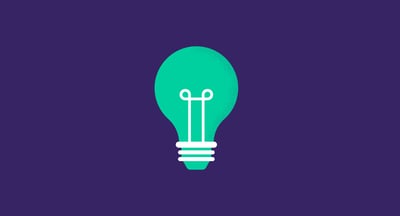
If you’re exploring the best Productiv alternatives, or looking for a new SaaS management platform (SMP) to control your SaaS risk or to save on SaaS, you’ve come to the right place.
| G2 Track | Productiv | |
| License utilization | X | X |
| Contracts management | X | X |
| Spend monitoring | X | X |
| SaaS price benchmarks with proprietary data | X | |
| Robust discovery powered by G2.com SaaS taxonomy | X | |
| Contracts concierge team | X | |
| Employee sentiment surveys | X | |
| AWS consumption reporting | X |
Here, we’ll explain:
But first, it’s crucial to understand the changing SMP market and aspects of these products that you should know as you consider buying one.
There are many – 242 according to G2.com - SaaS management platforms available today. Also sometimes referred to as SaaS Operations, SMP product strengths tend to fall into one of two camps:
It’s important to say that there’s no neat division between the two SMP camps.
Some products that lean toward the first group, can do some level of automation. Conversely, products that are more in the second camp, can also offer some contract, spend, and/or vendor-oriented functionality.
To determine the group you’re in – or the mix of each one you need – your path to the right SMP starts by conducting a thorough internal review. You should include a broad set of stakeholders to get the true picture of your organization’s pain points.
There are many different use cases within an organization, and different stakeholders have specific needs. A complete set of requirements is a necessity. This way, you’ll be able to judge how well Productiv, or one of the best Productiv alternatives, will meet needs.
When you’re ready to discuss your needs with Productiv, or a great Productiv alternative, it’s important to know a few things about tools for managing SaaS. Read on for what you should ask every vendor you’re considering adding to your organization.
Keep in mind, though, that many SMPs work the same way when it comes to the discovery process.
They’ll all integrate into your OAuth provider, and most will connect to your financial system. This means, you need to know which finance and accounting system you use, because not all SMPs will connect to that financial app the same way.
You’ll also need to figure out whether your organization and IT team wants a discovery process that relies on a desktop agent or a browser plugin. Not all SMPs offer this approach, and you may not want to deploy them, either.
If your organization does NOT want to use any kind of client-side discovery, then it’s a good idea to know exactly how their discovery works.
After all, an SMP is only as good as its ability to identify and continuously monitor all your organization’s SaaS apps. Now and the future ones that inadvertently pop up.
All in all, you can’t manage SaaS spending, vendors, contracts, and compliance certifications for the SaaS apps you can’t find. That’s why discovery is the cornerstone of all SMPs.
Another key consideration is whether you want breadth or depth when it comes to integrations. It’s important to remember that not all integrations are the same. Thus, in your requirements definition, you should know how you want to balance depth vs. breadth of integrations.
Some SMPs offer breadth by integrating with a lot of apps to provide you an indicator of how often employees use apps. This method tends to tell you how often a user logs into an app, but that’s about all.
And for what it’s worth, integrating your single-sign on (SSO) or OAuth provider with nearly any SMP can also give you this information.
Meanwhile, other SMPs might offer depth by integrating down to the product level for key apps. They show how much a user engages with a given SaaS app, and you can see the features that are used and better identify detailed trends.
A good example is direct connector or a usage extension to Zoom.
Instead of insights that are limited to logins, these direct connectors help you understand how often a user uses Zoom features that require a Pro license instead of a free Basic license.
Nonetheless, beware of the shiny promises of thousands of integrations. With any SMP vendor you approach, ask the right questions to investigate the nature of their pre-built, native integrations.
For creating a true picture of cost attribution, some SMPs are better than others. Make sure you ask how it attributes license costs over time, as opposed to a one-time cost.
When you start using an SMP, you WILL uncover duplicate apps and accounts.
You’ll also find two competing apps that solve the same use case. Usage insights help to quickly figure out which one to keep. However, user feedback collected within your SMP can help a lot, too.
Every SMP will claim that their solution is the easiest to deploy. The truth is, to take great advantage of contract management functions, you’ll need to spend the time to at least gather all your SaaS contracts.
To ease the burden, some vendors will add those details into the SMP for you. Others will leave that task up to you.
Thus, no matter which vendor you choose, it’s a commitment to get started. However, some SMP vendors make it easier than others.
Now that you know a bit about how to evaluate an SMP, let’s look at the strengths and weaknesses of Productiv, as well as pros and cons of the best Productiv alternatives you should consider.
Selling mainly to large enterprises, Productiv is an SMP that goes primarily in the contract, spend and vendor-oriented camp. That said, it does support some automated processes, like reclaiming unused licenses.
According to Productiv themselves, they’re a SaaS management platform that aligns IT, procurement, finance, and business leaders with insights to help:
They have a data-driven approach that combines billions of employee app usage data-points with vendor contract and organizational data (likely gathered via integration with the organization’s CASB, contract, finance, and expense tools).
Together, these data provide companies with a comprehensive view of their SaaS applications.
If Productiv isn’t meeting all your needs, never fear. Among the leading SMPs on the market, there are some great options.
So let’s look at the best Productiv options you should consider.
We’re going to look at 3 SaaS management products offering similar features as Productiv, making them some of the best Productiv alternatives.
This means all of these competitive products are all the “contracts, vendors, and spend” type of SMP.
Specifically, we describe each SaaS management platform and then explain the strengths and drawbacks for:
G2 Track is a great Productiv alternative, particularly for mid-market organization’s looking for a SaaS management platform that is easy to use and fast to deploy.
Because it provides full visibility of all apps on Day 1, you’ll also get a near instant return on investment.
So you can save money and time spent on your SaaS stack, G2 Track provides a 360-degree view of all relationships with SaaS and service vendors – including AWS- to ensure spending matches demand and vendors are performing to your standards.
In a single solution, G2 Track is a comprehensive suite of industry-leading:
By using G2 Track, an organization has complete visibility into its SaaS stack to optimize SaaS spending, contracts, and utilization – which makes it easier during renewals and buying new apps.
G2 Track has two primary features that make it one of the best Productiv alternatives in the market.
1)G2 Track has, hands down, the best and most thorough discovery process of any SMP or related tool on the market.
What’s the magic of G2 Track that no other SMP has?
It’s powered by the G2 SaaS product taxonomy that includes thousands of tools across hundreds of product categories. This means that G2 Track can near instantaneously identify all SaaS apps in your stack and alert you the minute new ones are added – which reduces the budget and security risks associated with Shadow IT.
2)Built-in employee sentiment surveys give you the information you need to make renewals faster and easier. This feature is particularly useful when trying to eliminate redundant apps and settle on an organizational, IT-authorized app in a product category. It allows you to get instant employee feedback on the SaaS apps in use, so you can make sure your SaaS stack is filled with apps your employees prefer to use.
Aimed at primarily enterprise-sized companies with more than 500 employees, Zylo considers itself a SaaS management and optimization platform. It is meant to:
As one of the best Productiv alternatives, Zylo optimizes SaaS investment by utilizing an AI Discovery Engine to process SaaS spending and deliver actionable insights. Zylo enhances SaaS visibility with frictionless ongoing monitoring of SaaS applications, as well as usage, and spending.
Zylo allows you to minimize SaaS spending and increase efficiencies by optimizing SaaS licenses. Like many of the top SMPs, it offers data-driven insights to identify applications with similar and overlapping functionality.
Vendr is another one of the best Productiv alternatives. According to Vendr, its end-to-end platform is changing how companies find, buy and manage SaaS.
To help organizations search, buy, and manage SaaS apps, Vendr provides a centralized platform that multiple departments use. It is augmented by a team of procurement and buying experts who get organizations through the entire buying process.
Vendr’s integration with the SMP they acquired – Blissfully – is a work in progress. Prior to the February 2022 deal, Vendr was purely a SaaS buying service and Blissfully was firmly a mid-tier SaaS management platform serving small to medium-sized businesses.
As a SaaS system of record, Blissfully offers
Like buying any SaaS app, choosing the right SaaS management platform requires buyers to balance features, functions, and value.
Of all the best Productiv alternatives, G2 Track shines because it:
As your SaaS stack’s single source of truth, it provides a centralized place for IT, finance, compliance, and operations to manage SaaS contracts, vendors, users, and apps.
In sum, G2 Track is perfect for all organizations that want to save on SaaS with an SMP that won’t break your budget.
Is G2 Track the best Productiv alternative for you? Learn more about how G2 Track can help.
Rachel is the Marketing Director at G2 Track - G2's SaaS Management Platform - designed to help IT and Finance leaders better manage and optimize their SaaS stack.
Think about how many SaaS applications your business uses.
 by Mara Calvello
by Mara Calvello
The way companies buy, deploy, manage and use digital technology has slowly changed over the...
 by Michael Fauscette
by Michael Fauscette
No matter the size of a company, having visibility into SaaS applications within its tech...
 by Mara Calvello
by Mara Calvello
Think about how many SaaS applications your business uses.
 by Mara Calvello
by Mara Calvello
The way companies buy, deploy, manage and use digital technology has slowly changed over the...
 by Michael Fauscette
by Michael Fauscette



